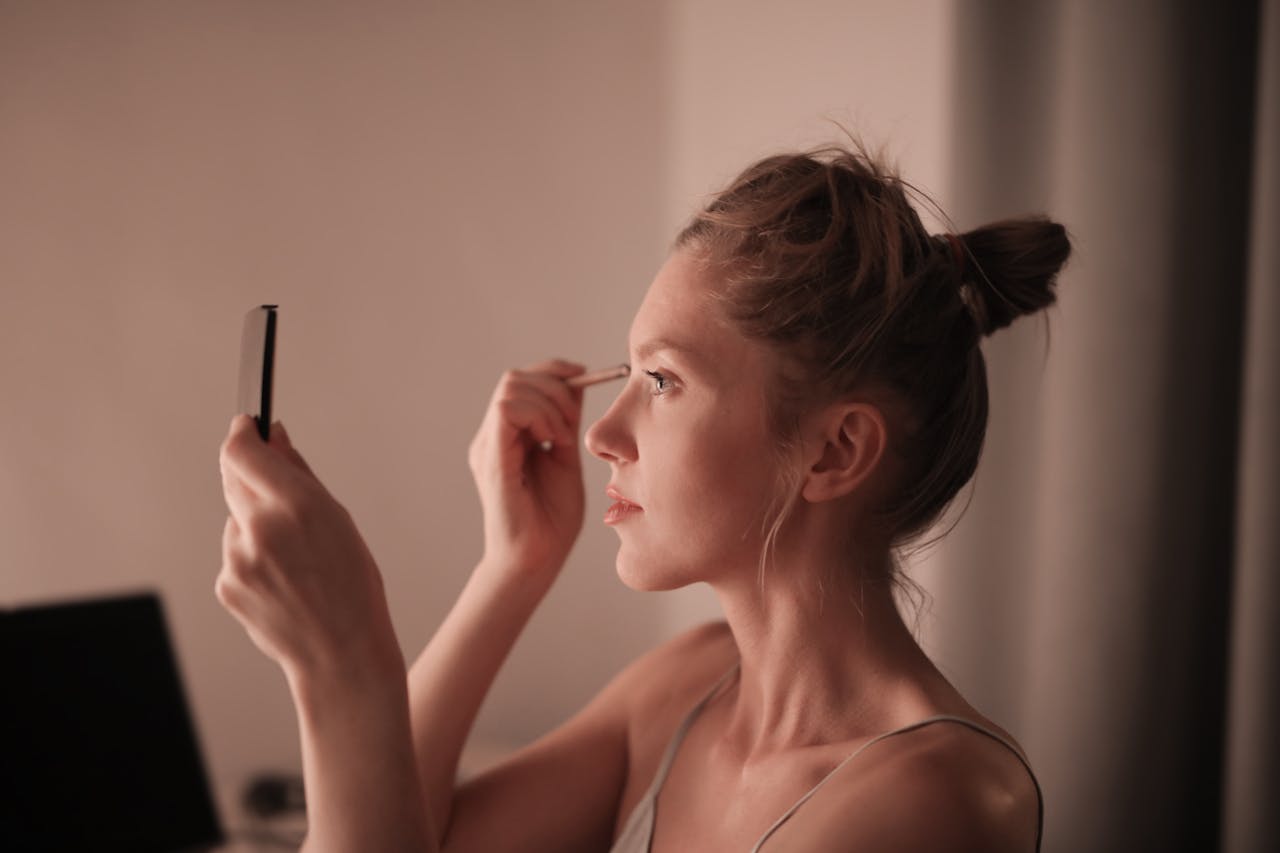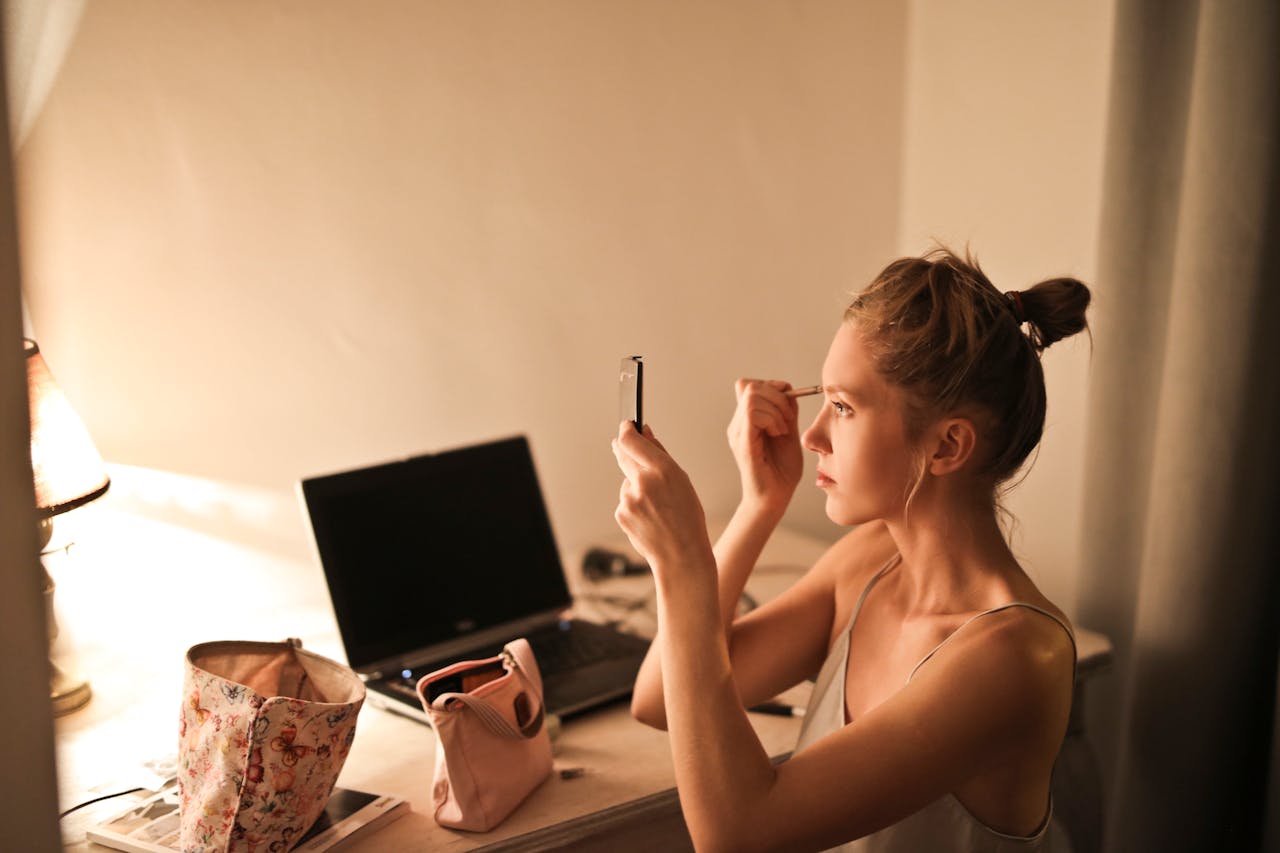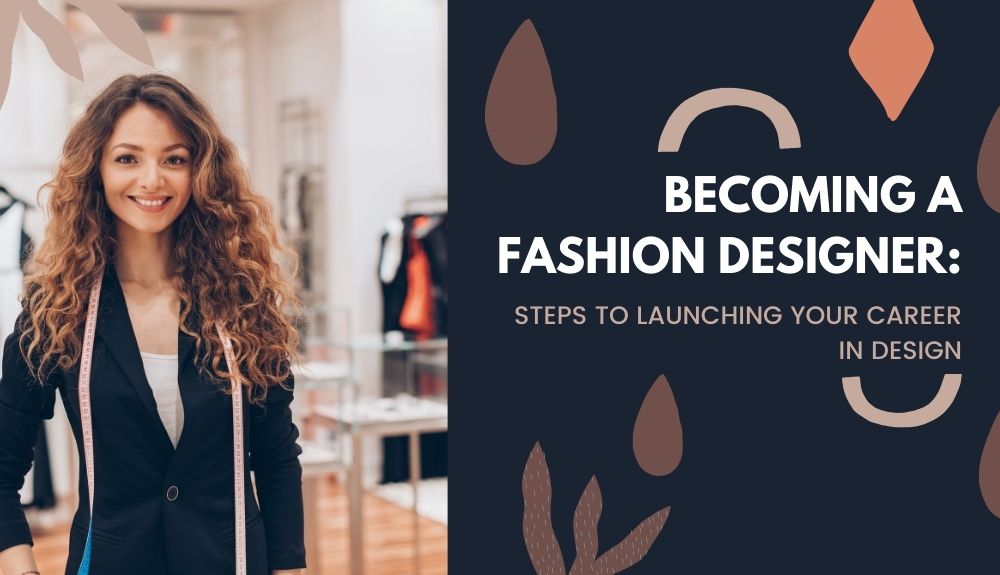Becoming a Fashion Designer: Steps to Launching Your Career in Design
Introduction: The allure of the fashion industry
The allure of the fashion industry has captivated many creative minds, inspiring them to pursue a career in design. The world of fashion offers endless possibilities for self-expression and innovation, making it an exciting and dynamic field to be a part of. If you dream of seeing your designs grace the runways or adorning the shelves of high-end boutiques, then becoming a fashion designer may be your calling. But how do you go about launching your career in this competitive industry? In this blog post, we will guide you through the essential steps to becoming a successful fashion designer. From developing your design skills to creating a brand and finding employment, we’ll explore everything you need to know on this exhilarating journey towards turning passion into profession. So grab your sketchbook and let’s get started!
Step 1: Develop Your Design Skills
When it comes to becoming a fashion designer, developing your design skills is the essential first step. This involves honing your creative abilities and learning the technical aspects of design. But where do you begin?
One option is to pursue formal education or training in fashion design. Many reputable institutions offer degree programs that provide a comprehensive foundation in design principles, garment construction techniques, and industry knowledge. These programs often include hands-on experience through projects and collaborations with industry professionals.
Another way to develop your skills is through self-study and practice. Experiment with different fabrics, colors, and styles to discover your own unique aesthetic. Take advantage of online resources such as tutorials, workshops, and forums where you can learn from experienced designers.
Building a strong portfolio is crucial for showcasing your talent and creativity. Include sketches, illustrations, photographs of garments you have designed or constructed, as well as any other relevant work such as mood boards or textile designs.
Remember that developing your design skills requires continuous learning and growth. Stay updated on current trends by attending fashion shows or exhibitions, reading industry publications, following influential designers on social media platforms – immerse yourself in the world of fashion!
By taking these steps towards developing your design skills early on in your career journey as a fashion designer will set you up for success in this highly competitive industry!
Education and training options
When it comes to becoming a fashion designer, education and training are essential steps in developing your design skills. There is a wide range of options available for aspiring designers to choose from.
One option is to pursue a degree in fashion design from a reputable college or university. These programs typically offer courses in design theory, garment construction, patternmaking, and textile science. This formal education can provide you with a solid foundation of knowledge and technical skills that will be invaluable as you embark on your career.
In addition to traditional educational programs, there are also online courses and workshops available for those who prefer more flexibility or have other commitments. These can be great options for gaining specific skills or expanding your knowledge in areas such as digital design software or sustainable fashion practices.
Another valuable avenue for learning is through internships and apprenticeships with established designers or fashion houses. This hands-on experience allows you to learn directly from industry professionals while gaining practical skills and industry insights.
No matter which path you choose, building a strong portfolio is crucial. Your portfolio should showcase your best work and highlight your unique style and creativity. Include sketches, photos of completed garments, fabric swatches – anything that demonstrates your ability to bring ideas to life.
Remember that education doesn’t stop once you’ve graduated or completed an internship. The fashion industry is constantly evolving, so staying up-to-date with the latest trends and technologies is vital. Attend workshops, seminars, trade shows – anything that keeps you informed about current developments in the field.
By investing time into developing your design skills through education and training opportunities while continuously adapting yourself based on new trends will help set yourself apart as you launch your career as a fashion designer!
Building a portfolio
Building a portfolio is an essential step for aspiring fashion designers to showcase their skills and creativity. It serves as a visual representation of your design aesthetic, technical abilities, and overall style. When it comes to building your portfolio, there are no strict rules or guidelines – it’s all about showcasing your unique perspective.
To start, gather your best design work and photographs of any garments you’ve created. Include sketches, illustrations, mood boards, fabric swatches – anything that visually represents your vision as a designer. Consider how each piece tells a story and reflects your personal style.
When curating your portfolio, focus on quality over quantity. Select only the strongest pieces that demonstrate versatility and skill across different design categories such as womenswear, menswear, or even accessories.
Additionally, don’t forget to include any experience you have gained through internships or collaborations with other designers. These experiences can add depth and credibility to your portfolio.
Remember that presentation matters too! Invest in professional photography or take high-quality images yourself to ensure the true essence of each garment shines through. Arrange the pieces in a logical order that flows well when viewed by potential employers or clients.
Keep updating and refining your portfolio regularly as you continue to grow as a designer. This will show prospective opportunities that you are constantly evolving creatively.
Building a compelling fashion design portfolio takes time but is crucial for making an impact in the industry. So put thought into every element – from the selection of designs to its presentation – because ultimately it will be what sets you apart from other designers vying for success in this highly competitive field.
Step 2: Gain Industry Experience

In the fast-paced and competitive world of fashion design, gaining industry experience is crucial for launching a successful career. It’s not enough to simply have talent and creativity; designers must also understand how the industry works and develop valuable connections.
One way to gain experience is through internships or apprenticeships with established fashion houses or design studios. These opportunities provide hands-on training and exposure to different aspects of the industry, from sketching designs to assisting in garment construction. By immersing yourself in a professional setting, you can learn firsthand how collections are developed, marketed, and produced.
Networking is another essential aspect of building your industry experience. Attending fashion events, trade shows, and conferences allows you to connect with other professionals within the field. Building relationships with mentors or colleagues can open doors for future collaborations or job opportunities.
Additionally, seeking out freelance projects or volunteer work within the fashion community can help expand your portfolio while providing valuable real-world experience. This could involve designing costumes for local theater productions or creating custom pieces for friends and family.
By actively pursuing these experiences early on in your career journey as a fashion designer, you will not only improve your skills but also begin establishing credibility within the industry. Remember that learning never stops in this ever-evolving field – stay curious, adaptable, and always seek new ways to grow as a designer!
Internships and apprenticeships
Internships and apprenticeships in the fashion industry are invaluable opportunities for aspiring fashion designers to gain hands-on experience and learn from professionals in the field. These programs provide a unique chance to work alongside established designers, observe their creative process, and contribute to real-life projects.
During an internship or apprenticeship, you’ll have the opportunity to develop your technical skills by assisting with tasks such as pattern making, sewing, and fabric sourcing. Additionally, you’ll gain insight into the business side of fashion through participating in meetings and observing how collections are developed from concept to production.
One of the major advantages of internships and apprenticeships is that they allow you to build a network within the industry. By working closely with experienced professionals, you can form connections that may lead to future job opportunities or collaborations.
To find these opportunities, it’s important to research fashion companies and reach out directly with a well-crafted cover letter expressing your interest. Many brands offer formal internship programs which can be found on their websites or through online job boards dedicated specifically to fashion internships.
While internships may not always come with financial compensation, they do provide valuable experience that will set you apart from other candidates when applying for jobs down the line. Remember that every task assigned during your internship is an opportunity for growth and learning – embrace them all!
In conclusion: Internships and apprenticeships are stepping stones towards launching a successful career in fashion design. They offer practical experience, networking opportunities, and a chance for self-improvement. So seize these chances whenever possible – they could be just what takes your design journey from ordinary to extraordinary!
Networking opportunities
Networking opportunities are crucial for aspiring fashion designers looking to break into the industry. Building connections and fostering relationships with key players can open doors to internships, collaborations, and even job offers.
To start networking, attending industry events such as fashion shows, trade fairs, and conferences is essential. These gatherings provide ample opportunities to mingle with professionals in the field and make meaningful connections. Remember to bring your business cards and be confident in introducing yourself.
Social media platforms like LinkedIn, Instagram, and Twitter also offer valuable networking possibilities. Follow influential designers, fashion brands, and industry insiders to stay updated on trends and connect with them through comments or direct messages.
Joining professional associations or organizations dedicated to fashion design is another way to expand your network. Attend workshops or seminars organized by these groups where you can learn from experts while meeting fellow designers who may become future collaborators or mentors.
Additionally, consider reaching out directly to established designers or boutique owners for informational interviews. Ask thoughtful questions about their career paths and seek advice on how best to navigate the industry.
Remember that networking is a two-way street – be willing to offer assistance or support when possible instead of solely seeking personal gain from others’ knowledge or connections.
By actively engaging in networking opportunities both online and offline, you increase your chances of finding mentorship opportunities, getting insider tips on job openings before they’re advertised publicly, and potentially securing invaluable introductions that could advance your career significantly.
Step 3: Create a Brand and Market Yourself
In the competitive world of fashion design, creating a brand and effectively marketing yourself is crucial for success. To establish your unique identity as a designer, consider these key steps.
Develop a strong brand identity by clearly defining your aesthetic, target audience, and values. This will help you stand out from the crowd and attract like-minded customers. Use this foundation to create a compelling brand story that resonates with your audience.
Next, build an online presence through social media platforms such as Instagram, Pinterest, or TikTok. Share glimpses into your creative process and showcase your designs to captivate potential clients or employers. Utilize hashtags strategically to increase visibility within the fashion community.
Networking is also essential in promoting yourself as a designer. Attend industry events like fashion shows or trade fairs to meet professionals who can provide valuable insights or opportunities for collaboration. Building relationships with influencers can also boost exposure for your brand.
Consider collaborating with other designers or brands to expand reach and tap into new markets. Joint projects allow you to combine skills and resources while exposing both parties’ audiences to fresh perspectives.
Remember the power of storytelling in marketing yourself as a fashion designer. Develop captivating visual content that communicates not only the beauty of your designs but also their inspiration and significance. Engage with followers by sharing behind-the-scenes moments or personal anecdotes that make them feel connected on an emotional level.
By creating an authentic brand image and implementing effective marketing strategies, you’ll position yourself for success in today’s fast-paced fashion industry.
Step 4: Finding Employment or Starting Your Own Label

Finding employment in the fashion industry can be a thrilling journey. Whether you dream of working for a renowned fashion house or starting your own label, this step is all about taking action and making your mark.
If you’re looking to join an established brand, keep an eye out for job openings on websites dedicated to fashion careers. Networking events and industry conferences are also great opportunities to meet professionals who may be hiring.
On the other hand, if you have that entrepreneurial spirit burning within you, starting your own label could be the perfect path. It’s essential to develop a business plan and identify your target audience. Take some time to research funding options such as grants or loans tailored specifically for emerging designers.
Once you’ve made up your mind, it’s time to bring your vision to life! Find manufacturers and suppliers who align with your brand values. Don’t forget about marketing – social media platforms like Instagram can help showcase your designs and grow a loyal following.
Remember, building a successful career in fashion takes determination, perseverance, and continuous learning. Stay inspired by keeping up with current trends while maintaining authenticity in everything you do.
Whether finding employment or embarking on entrepreneurship excites you more – trust yourself and embrace the exciting journey that lies ahead!
The Importance of Constant Learning and Adaptability in the Fashion Industry
In the fast-paced world of fashion, constant learning and adaptability are key to staying ahead of the curve. Trends come and go, consumer preferences change, and technology advances at lightning speed. To succeed in this industry, you must be willing to continuously learn and evolve.
Fashion designers need to stay up-to-date with current trends, techniques, and technologies. This means attending workshops, taking courses or classes, reading industry publications, following influential figures on social media platforms – anything that helps broaden your knowledge base.
Adaptability is equally important in the fashion industry. Designers must constantly adapt their creations to meet changing consumer demands and market trends. This requires a keen eye for spotting emerging trends early on and adjusting your design aesthetic accordingly.
Additionally, being adaptable means embracing new technologies that can enhance your design process. From 3D printing to virtual reality runway shows, technology has revolutionized the way we create and showcase fashion.
By continuously learning and adapting to changes in the industry landscape, you position yourself as a valuable asset in the highly competitive world of fashion design. So keep an open mind, never stop learning new skills or exploring innovative ideas – because success in this field depends on it!
Conclusion:
Embarking on a career in fashion design can be an exciting and fulfilling journey. It requires dedication, hard work, and a passion for creativity. Through the steps outlined above, you can set yourself up for success in this competitive industry.
Remember that developing your design skills is essential. Whether it means enrolling in a formal education program or seeking out alternative training options, honing your abilities will give you the foundation necessary to excel as a fashion designer.
Gaining industry experience through internships and apprenticeships will not only provide valuable hands-on knowledge but also help you establish connections within the industry. Networking is key, so take advantage of every opportunity to meet professionals who can guide you along your path.
Creating a brand and marketing yourself are crucial aspects of becoming a successful fashion designer. Building an online presence through social media platforms and showcasing your unique style through a portfolio will help attract attention from potential employers or customers if you decide to start your own label.
Keep in mind that the fashion industry is ever-changing and evolving. Stay updated with current trends by continuously learning new techniques, attending workshops, and staying open-minded to adaptability. Embrace innovation while staying true to your creative vision.
As you embark on this thrilling journey towards pursuing your dreams as a fashion designer, remember that perseverance is key – setbacks may occur along the way but remain steadfast in following your passion. With determination and tenacity, there’s no limit to what you can achieve!
So go ahead – unleash your creativity on runways around the world or create designs that inspire others! The possibilities are endless when it comes to forging an exciting career in the captivating world of fashion design!











